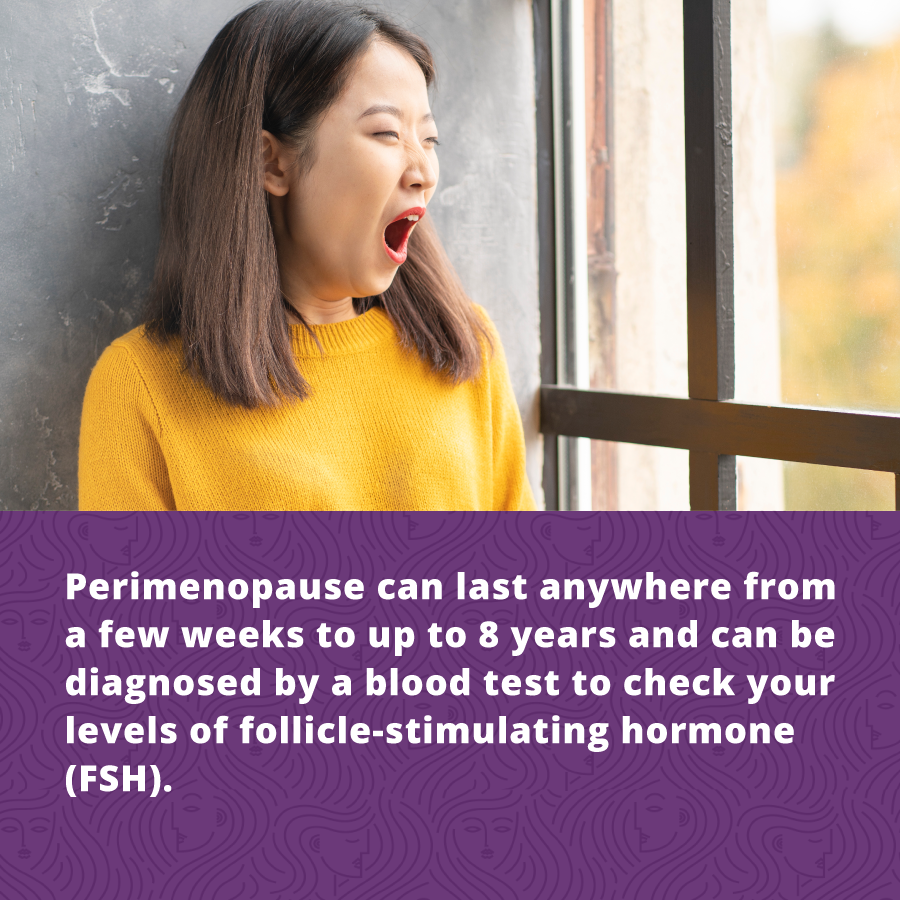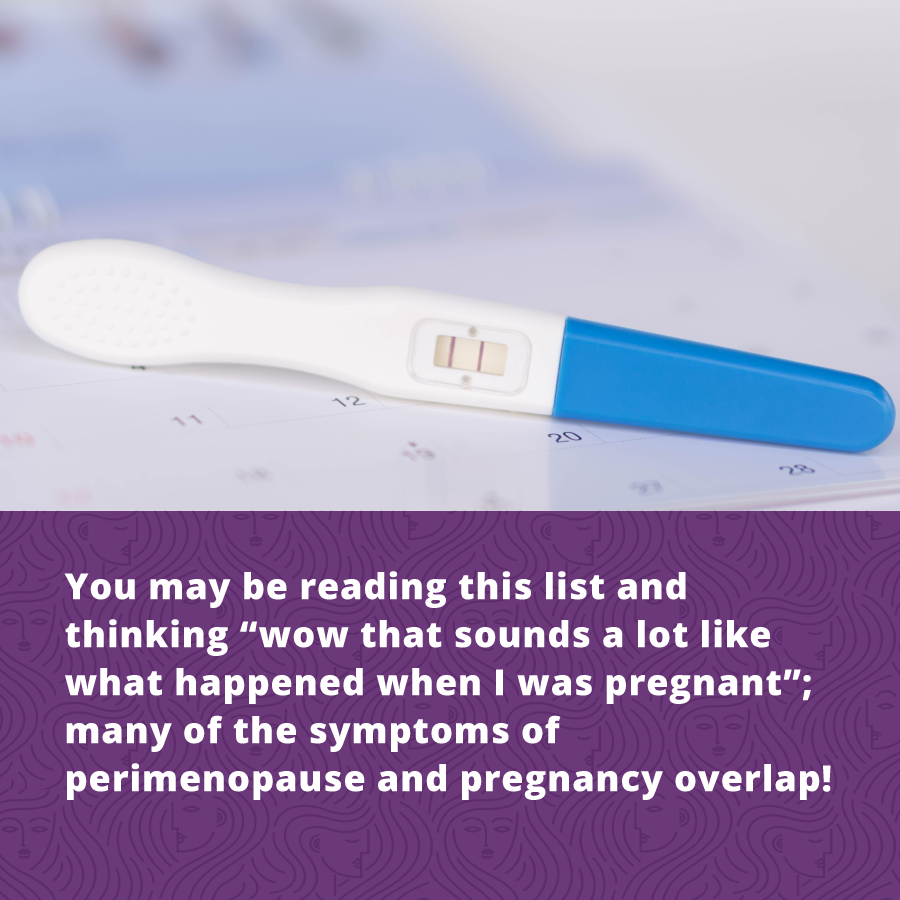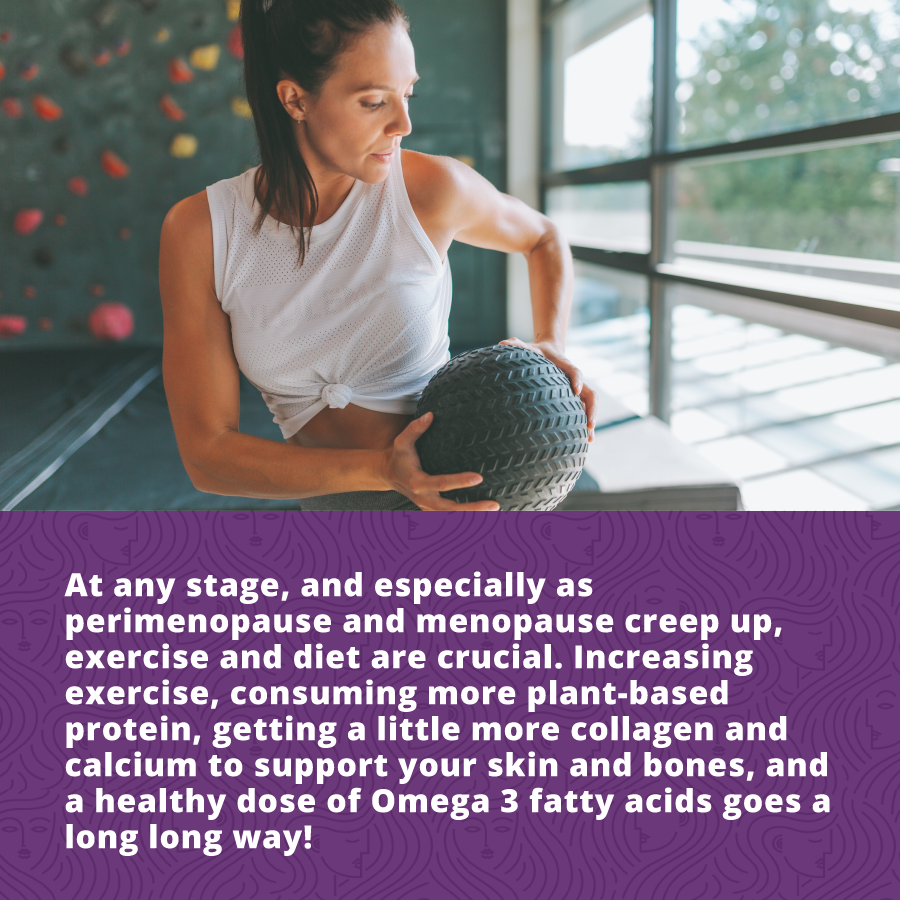What’s Happening to your Body During Perimenopause, Premenopause, and Postmenopause
If only menopause had a clear start, or predictable symptoms, or a definitive stop date, then it’d be much easier to manage. In reality, the menopause, the menopause, is the only stage that is clearly timestamped. Premenopause, perimenopause, and postmenopause are the stages leading up to and following menopause that each bring a variety of changes to the body. In this blog, we’ll break down what is happening to your body biologically to prep your body for its next stage in life.
Premenopause
Premenopause is the first stage of menopause. It’s often confused or lumped together with perimenopause, but they are technically two different stages that are marked with different symptoms. A woman is considered to be in premenopause any time between her first and last period; the ovaries are still producing estrogen, you still have periods, and you should not have any noticeable changes in your body. Obviously, this constitutes the majority of a woman’s childbearing years. For this reason, perimenopause, peri meaning near, is the time right before menopause starts (we’ll get into that more below).

Perimenopause
While premenopause is a rather vague and long stretch of time, perimenopause is a much shorter and distinct phase that marks the beginning of menopause. A woman is considered to be in perimenopause around ages 30-40 when she experiences a steep decline in estrogen production. It’s helpful to understand that menopause is only diagnosed 12 months after a woman’s last period, so perimenopause occurs in the years and months leading up to this point. Perimenopause can last anywhere from a few weeks to up to 8 years and can be diagnosed by a blood test to check your levels of follicle-stimulating hormone (FSH).
During perimenopause, women experience many of the same symptoms of menopause including:
- Irregular periods
- Hot flashes
- Breast tenderness
- Worse premenstrual syndrome.
- Lower sex drive
- Fatigue
- Vaginal dryness; discomfort during sex.
- Urine leakage when coughing or sneezing.
All of these changes are due to your body’s hormonal changes as the result of a drop in estrogen.
One of the most telling signs of perimenopause, though, is having irregular periods. During this time, your body may be producing just enough estrogen to create a fertilized egg, but it could take much longer, causing periods to be spread out for longer periods of time or to become much lighter. With that said, you should never ignore drastic changes in your menstrual cycle. If you experience heavy periods with blood clots, long periods, or spotting after intercourse, tell your OBGYN.

You may be reading this list and thinking “wow that sounds a lot like what happened when I was pregnant”; many of the symptoms of perimenopause and pregnancy overlap! If you are experiencing these symptoms over the age of forty, your first check should be an at-home pregnancy test followed by a confirmation of the results with your doctor. Some symptoms that are unique to perimenopause include loss of bone mass, vaginal dryness, and changes in cholesterol.
Every woman’s fertility journey is a bit different, but pregnancy is still a possibility during perimenopause. However, it can make getting pregnant much more difficult for some women. The quality of eggs starts to decrease as we age, especially around the age of 35 when many women enter perimenopause. This can unfortunately lead to miscarriages and may require the assistance of a fertility specialist to assess your risks.
Menopause
Many people mistakenly attribute the symptoms of perimenopause to menopause. Like we mentioned earlier, menopause is defined as when a woman’s ovaries have stopped releasing eggs and producing most of their estrogen and is technically diagnosable after 12 months have gone by without having a period. Menopause can happen as early as your 40s, but in the United States, the average age is 51.
In addition to the symptoms of perimenopause listed above, symptoms of menopause can also include:
- Trouble sleeping (mostly due to temperature fluctuations in the body)
- Decreased vaginal lubrication and pain during sex
- Urinary incontinence (due to thinning vaginal tissue)
- Mood swings and depressive symptoms
- Weight gain around the midsection
- Thinning hair
- Loss of breast fullness
Postmenopause
Postmenopause is the final menopausal stage and is the stage a woman remains in for the rest of her life. Postmenopause can also be diagnosed by a blood test to monitor your hormonal levels. Now that menopause has occurred and estrogen production has halted, you may experience vaginal dryness, incontinence, increased cholesterol levels, and hot flashes. During postmenopause, the symptoms of menopause gradually start to decline. However, the decline in menopausal symptoms is met with an increased risk for other diseases including:
- Osteoporosis: Between menopause and the age of sixty, women lose about 25% of their bone density which puts them at higher risk for osteoporosis. Mobility and weight-bearing exercises are crucial at this stage of your life and your Fitness After Forty plan.
- Sexual discomfort: Due to vaginal dryness, sex could become uncomfortable or painful. However, over the counter lubricants and prescription estrogen creams can help, as can having more sex!
- Heart disease: The decrease in estrogen production may lead to an increased risk of heart disease. During a woman’s postmenopausal year, cholesterol and blood pressure increase as does the risk of stroke. These risks can also be lowered by eating a healthy diet and living an active lifestyle.
- Emotional well-being: Many women experience emotional distress at this point in their lives. As in any stage of life, it’s important to share this with a healthcare professional to get support as you navigate through the changes of postmenopause.

So many women fear menopause or worry that their bodies will be out of their control – but this is not the case. Yes, menopause is a natural part of a woman’s life, but that doesn’t mean you just have to grin and bear it. At any stage, and especially as perimenopause and menopause creep up, exercise and diet are crucial. Increasing exercise, consuming more plant-based protein, getting a little more collagen and calcium to support your skin and bones, and a healthy dose of Omega 3 fatty acids goes a long long way! The changes and side effects you experience are worthy of a doctor’s visit to help you find a way to manage your symptoms, not suffer through them. Your health is in your hands!


1 Comment
Join the discussion and tell us your opinion.
[…] During and after menopause, women should aim for consuming 1,000 to 1,200 milligrams of calcium each day, either through food intake or supplements. The most effective way to make sure you’re getting enough calcium is to combine calcium-rich foods like milk, yogurt, and leafy greens with supplements. Calcium is considered the best menopause supplement overall, but it doesn’t stop here! […]